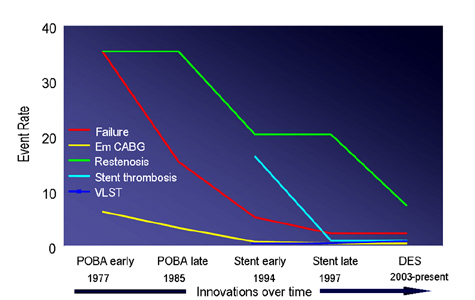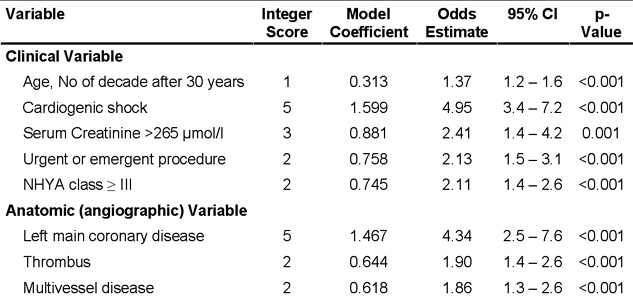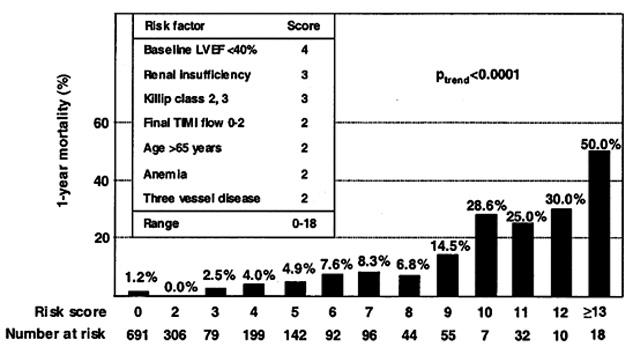PCI complications: factors associated with complications
|
Percutaneous coronary intervention Microchapters |
|
PCI Complications |
|---|
|
PCI in Specific Patients |
|
PCI in Specific Lesion Types |
|
PCI complications: factors associated with complications On the Web |
|
American Roentgen Ray Society Images of PCI complications: factors associated with complications |
|
FDA on PCI complications: factors associated with complications |
|
CDC on PCI complications: factors associated with complications |
|
PCI complications: factors associated with complications in the news |
|
Blogs on PCI complications: factors associated with complications |
|
Directions to Hospitals Treating Percutaneous coronary intervention |
|
Risk calculators and risk factors for PCI complications: factors associated with complications |
Editors-In-Chief: Alexandra Almonacid M.D. [1]; Jeffrey J. Popma M.D. [2]
Early Clinical Outcomes After PCI

- Anatomic Success: Residual diameter stenosis < 50 % which is generally associated with at least a 20 percent improvement in diameter stenosis and relief of ischemia.
- Pre-Stent Era: 72 – 74%.
- Stent Era: 82 – 98%
- Procedural Success: Angiographic success without the occurrence of major complications (death, MI, or CABG) within 30 days of the procedure.
- Clinical Success: Procedural success without the need for urgent repeat PCI or surgical revascularization within the first 30 days of the procedure
Variables Associated with Early Failure and Complications After PCI
- Clinical variables
- Women
- Advanced Age
- Diabetes Mellitus
- Unstable or Canadian Cardiovascular Society (CCS) Class IV angina
- Congestive heart failure
- Cardiogenic shock
- Renal insufficiency
- Preprocedural instability requiring intraaortic balloon pump support
- Preprocedural Elevation of C-reactive protein
- Multivessel Coronary Artery Disease
- Anatomic variables
- Multivessel CAD
- Left Main Disease
- Thrombus
- SVG intervention
- ACC/AHA Type B2 and C lesion morphology
- Chronic total coronary occlusion
- Procedural factors
- A higher final percent diameter stenosis
- Smaller minimal lumen diameter
- Presence of a residual dissection or trans-stenotic pressure gradient
Risk Scores
Mayo Clinic Risk Score

CADILLAC Risk Score
